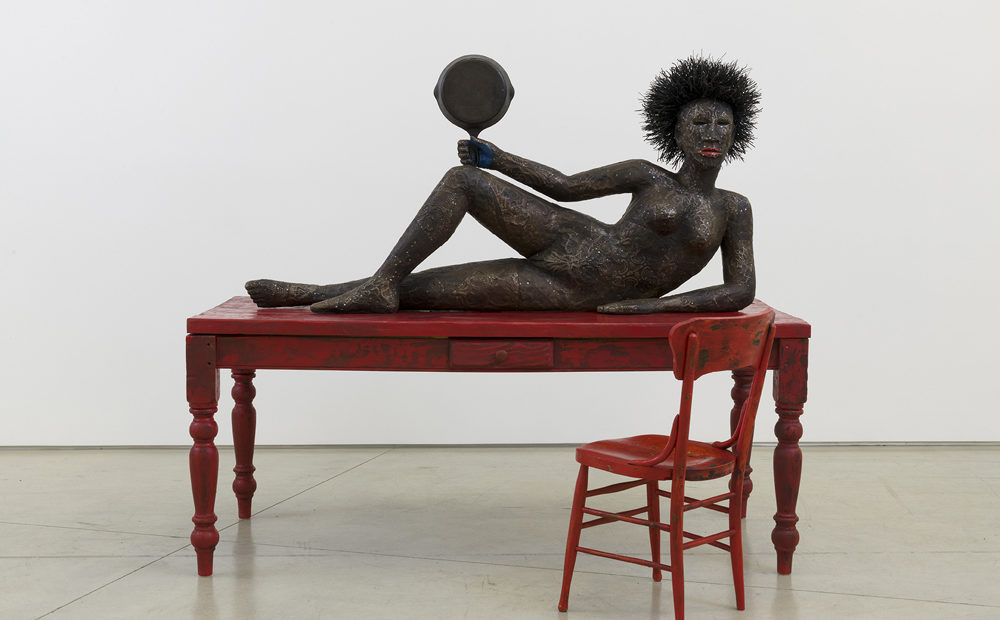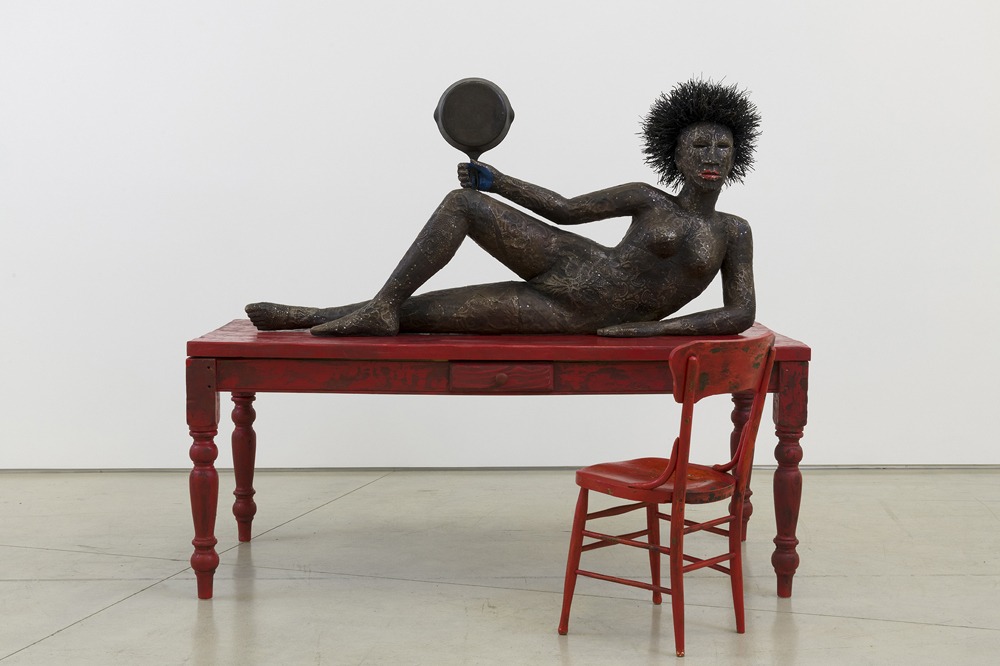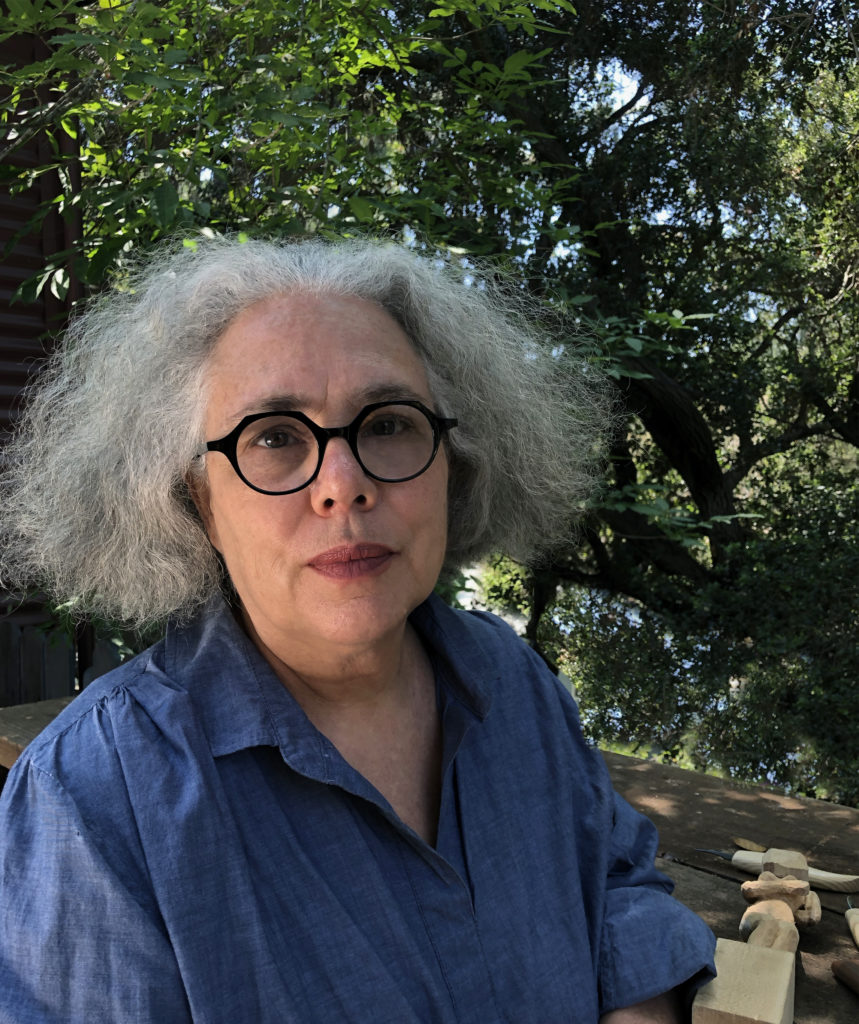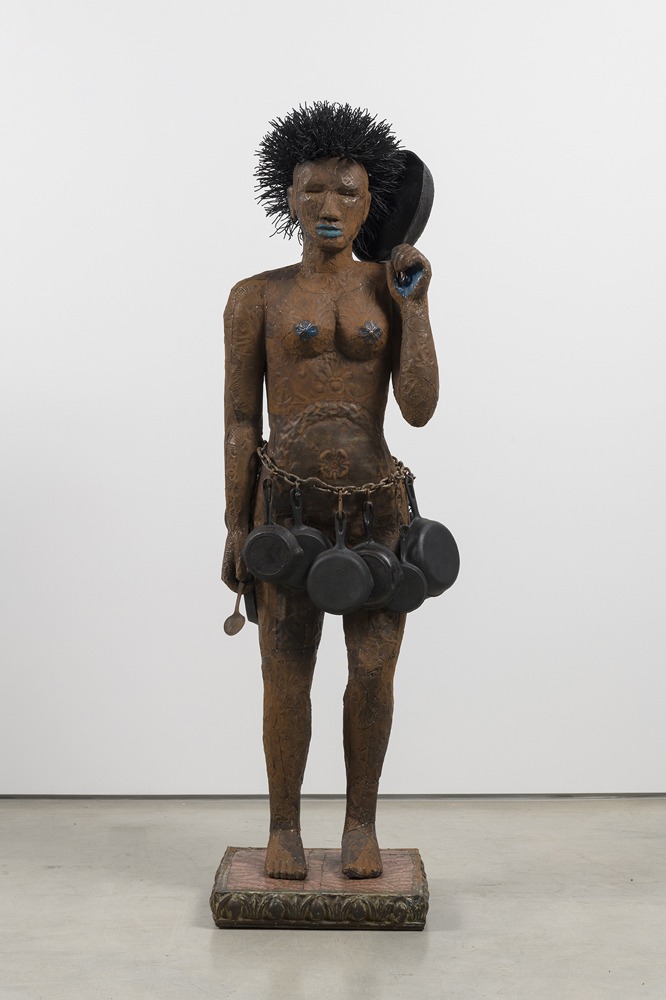
‘She’s Challenging You’: Alison Saar’s Sculptures Speak To Race, Beauty, Power
LISTEN
BY SUSAN STAMBERG
For Los Angeles sculptor Alison Saar, art came from both sides of the family. Her mother, Betye Saar, 93, is a well-known artist. Her father, Richard Saar, was a conservator and ceramicist. The sculptures and prints Saar makes echo themes her mother has touched for decades. Betye Saar’s collages reflect the anger of the civil rights generation; her daughter builds on that history.
Race, gender, the power of women, black hair and the kitchen are all themes that appear in Saar’s work. Her last show in LA offered a small cookbook of family recipes, accompanied by photos of her works. Next to a recipe for greens you can see Saar’s sculpture Kitchen Amazon. It’s a large female nude sheathed in antique, rusted tin, salvaged from ceilings in old New York tenements. Embossed with patterns, the tin is tacked tightly onto the carved wooden figure, like skin.

“She’s challenging you to sit down in that chair,” Los Angeles artist Alison Saar says of her 2019 sculpture, Set to Simmer. CREDIT: Jeff McLane/L.A. Louver
It’s gorgeous, and Kimberly Davis — director of L.A. Louver, the gallery that shows Saar’s work — explains that the patterned tin also “speaks of scarification and African rituals of how the body can be changed and glorified.” Cast-iron skillets hang from a heavy chain belt draped around the Amazon’s hips. She holds a pan above her shoulder “in a kind of fierce don’t-mess-with-me” pose. Saar explains with a laugh: “People get out of hand, you hit someone upside the head with the skillet!”

Alison Saar says she gets “a sense of calm in all this chaos,” watching seeds she planted begin to sprout.
CREDIT: Susan Stamberg/NPR
But Kitchen Amazon also nourishes her family, holds them together. The sculpture starred in an L.A. Louver show called “Chaos in the Kitchen.” Her childhood kitchen in California was wonderfully chaotic, Saar says — full of manic energy. Her mother painted, Alison and her siblings did homework there, and they all cooked. “We also heated up our hot combs and did our hair — that was also the hair parlor,” she recalls, adding that the kitchen always smelled of cornbread and singed hair.
Saar has a gray cloud of soft hair — but there’s nothing soft about the hair in her sculptures. It’s made with barbed and baling wire. The sculpture Set to Simmer (see it at the top of the page) shows a nude with dangerous looking hair — tough, bristly, sharp.
The figure is voluptuous — vibrant red lips, tight breasts — she stretches out on a long red table. A chair is drawn up to the table, inviting viewers to have a seat and ponder. “She’s challenging you to sit down in that chair,” Saar explains. “She says: Yeah, if you want to look at me, don’t just give me a sideways glance. Sit down in this chair and know me.”

Alison Saar created Kitchen Amazon in 2019 from wood, ceiling tin, barbed wire, tar, found skillets, linoleum and found chain. CREDIT: Jeff McLane/L.A. Louver
The sculpted woman is confident in her own embellished skin and powerful with her thick iron hair. She’s a 21st century woman. She takes Saar back, again, to her childhood days in the kitchen, where her grandmother straightened her hair with an object Alison now uses to make art — a hot comb. (They become bases for small nude sculptures, such as The Big Singe, which you can see below). She knows the process: Smear on Pomade, then guide the hot comb starting at the bottom of the hair and working up to the scalp. It took forever. “And then,” Saar explains, “you’ve just got to stay out of the water, and don’t sweat!”
Now 64, Saar says her generation mostly didn’t straighten their hair, which freed up a lot of time for other things — like, say, making art.















